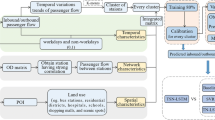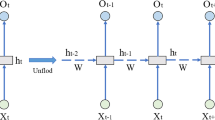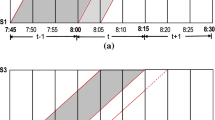Abstract
By tapping into the human mobility of the urban rail transit (URT) network to understand the travel demands and characteristics of passengers in the urban space, URT managers are able to obtain more support for decision-making to improve the effectiveness of operation and management, the travel experience of passengers, as well as public safety. However, not all URT networks have sufficient human mobility data (e.g., newly-operated URT networks). It is necessary to provide data support for mining human mobility in data-poor URT networks. Therefore, we propose a method called Meta Long Short-Term Memory Network (Meta-LSTM) for passenger flow prediction at URT stations to provide data support for networks that lack data. The Meta-LSTM is to construct a framework that increases the generalization ability of a long short-term memory network (LSTM) to various passenger flow characteristics by learning passenger flow characteristics from multiple data-rich stations and then applying the learned parameter to data-scarce stations by parameter initialization. The Meta-LSTM is applied to the URT network of Nanning, Hangzhou, and Beijing, China. The experiments on three real-world URT networks demonstrate the effectiveness of our proposed Meta-LSTM over several competitive baseline models. Results also show that our proposed Meta-LSTM has a good generalization ability to various passenger flow characteristics, which can provide a reference for passenger flow prediction in the stations with limited data.













Similar content being viewed by others
Data availability
The datasets generated during and/or analyzed during the current study are available from the corresponding author on reasonable request.
References
Bechtle S, Molchanov A, Chebotar Y et al (2021) Meta learning via learned loss[C]//2020 25th International Conference on Pattern Recognition (ICPR). IEEE, 4161–4168. https://doi.org/10.48550/arXiv.1906.05374
Casgrain P, Kratsios A (2021) Optimizing Optimizers: Regret-optimal gradient descent algorithms[C]//Conference on Learning Theory. PMLR, 883–926. https://doi.org/10.48550/arXiv.2101.00041
Chen Y, Liu Z, Xu H et al (2021) Meta-baseline: Exploring simple meta-learning for few-shot learning[C]//Proceedings of the IEEE/CVF international conference on computer vision, 9062–9071. https://doi.org/10.1109/ICCV48922.2021.00893
Chen YS, Chiang SW, Wu ML (2022) A few-shot transfer learning approach using text-label embedding with legal attributes for law article prediction. Appl Intell 52(3):2884–2902. https://doi.org/10.1007/s10489-021-02516-x
Finn C, Abbeel P, Levine S (2017) Model-agnostic meta-learning for fast adaptation of deep networks[C]//International conference on machine learning. PMLR, 1126–1135
Franceschi L, Donini M, Frasconi P et al (2017) Forward and reverse gradient-based hyperparameter optimization[C]//International Conference on Machine Learning. PMLR, 1165–1173
Fu R, Zhang Z, Li L (2016) Using LSTM and GRU neural network methods for traffic flow prediction[C]//2016 31st Youth academic annual conference of Chinese association of automation (YAC). IEEE, 324–328. https://doi.org/10.1109/YAC.2016.7804912
Hospedales T, Antoniou A, Micaelli P et al (2021) Meta-learning in neural networks: a survey. IEEE Trans Pattern Anal Mach Intell 44(9):5149–5169. https://doi.org/10.1109/TPAMI.2021.3079209
Jiao P, Li R, Sun T et al (2016) Three revised Kalman filtering models for short-term rail transit passenger flow prediction. Math Probl Eng 2016(pt.3):1–10. https://doi.org/10.1155/2016/9717582
Jin G, Cui Y, Zeng L et al (2020) Urban ride-hailing demand prediction with multiple spatio-temporal information fusion network. Transp Res Part C: Emerg Technol 117:102665. https://doi.org/10.1016/j.trc.2020.102665
Karami A, Crawford M, Delp EJ (2020) Automatic plant counting and location based on a few-shot learning technique. IEEE J Sel Top Appl Earth Obs Remote Sens 13:5872–5886. https://doi.org/10.1109/JSTARS.2020.3025790
Li C, Bai L, Liu W et al (2021) A multi-task memory network with knowledge adaptation for multimodal demand forecasting. Transp Res Part C: Emerg Technol 131:103352. https://doi.org/10.1016/j.trc.2021.103352
Li J, Guo F, Sivakumar A et al (2021) Transferability improvement in short-term traffic prediction using stacked LSTM network. Transp Res Part C: Emerg Technol 124:102977. https://doi.org/10.1016/j.trc.2021.102977
Li L, Wang Y, Zhong G et al (2018) Short-to-medium term passenger flow forecasting for metro stations using a hybrid model. KSCE J Civ Eng 22:1937–1945. https://doi.org/10.1007/s12205-017-1016-9
Li N, Hu L, Deng ZL et al (2021) Research on GRU neural network satellite traffic prediction based on transfer learning. Wireless Pers Commun 118:815–827. https://doi.org/10.1007/s11277-020-08045-z
Li W, Sui L, Zhou M et al (2021) Short-term passenger flow forecast for urban rail transit based on multi-source data. EURASIP J Wirel Commun Netw 2021(1):1–13. https://doi.org/10.1186/s13638-020-01881-4
Liu Y, Liu Z, Jia R (2019) DeepPF: a deep learning based architecture for metro passenger flow prediction. Transp Res Part C: Emerg Technol 101:18–34. https://doi.org/10.1016/j.trc.2019.01.027
Liu Y, Zheng H, Feng X et al (2017) Short-term traffic flow prediction with Conv-LSTM[C]//2017 9th International Conference on Wireless Communications and Signal Processing (WCSP). IEEE, 1–6. https://doi.org/10.1109/WCSP.2017.8171119
Ma X, Dai Z, He Z et al (2017) Learning traffic as images: A deep convolutional neural network for large-scale transportation network speed prediction. Sensors 17(4):818. https://doi.org/10.3390/s17040818
Ma X, Tao Z, Wang Y et al (2015) Long short-term memory neural network for traffic speed prediction using remote microwave sensor data. Transp Res Part C: Emerg Technol 54:187–197. https://doi.org/10.1016/j.trc.2015.03.014
Ma X, Zhong H, Li Y et al (2020) Forecasting transportation network speed using deep capsule networks with nested LSTM models. IEEE Trans Intell Transp Syst 22(8):4813–4824. https://doi.org/10.1109/TITS.2020.2984813
Mandal D, Medya S, Uzzi B et al (2022) Metalearning with graph neural networks: methods and applications. ACM SIGKDD Explor Newsl 23(2):13–22. https://doi.org/10.48550/arXiv.2103.00137
Moreira-Matias L, Gama J, Ferreira M et al (2013) Predicting taxi–passenger demand using streaming data. IEEE Trans Intell Transp Syst 14(3):1393–1402. https://doi.org/10.1109/TITS.2013.2262376
Nichol A, Achiam J, Schulman J (2018) On first-order meta-learning algorithms. arXiv preprint arXiv:1803.02999
Polson NG, Sokolov VO (2017) Deep learning for short-term traffic flow prediction. Transp Res Part C: Emerg Technol 79:1–17. https://doi.org/10.1016/j.trc.2017.02.024
Ren Y, Chen X, Wan S et al (2019) Passenger flow prediction in traffic system based on deep neural networks and transfer learning method[C]//2019 4th International Conference on Intelligent Transportation Engineering (ICITE). IEEE, 115–120. https://doi.org/10.1109/ICITE.2019.8880220
Requeima J, Gordon J, Bronskill J et al (2019) Fast and flexible multi-task classification using conditional neural adaptive processes. Adv Neural Inf Process Syst 32:7959–7970
Song H, Deng B, Pound M et al (2022) A fusion spatial attention approach for few-shot learning. Inf Fusion 81:187–202. https://doi.org/10.1016/j.inffus.2021.11.019
Kaffash S, Nguyen AT, Zhu J (2021) Big data algorithms and applications in intelligent transportation system: a review and bibliometric analysis. Int J Prod Econ 231:107868. https://doi.org/10.1016/j.ijpe.2020.107868
Tian C, Zhu X, Hu Z et al (2021) A transfer approach with attention reptile method and long-term generation mechanism for few-shot traffic prediction. Neurocomputing 452:15–27. https://doi.org/10.1016/j.neucom.2021.03.068
Triantafillou E, Zhu T, Dumoulin V et al (2019) Meta-dataset: A dataset of datasets for learning to learn from few examples. arXiv preprint arXiv:1903.03096
Vlahogianni EI, Golias JC, Karlaftis MG (2004) Short-term traffic forecasting: Overview of objectives and methods. Transp Rev 24(5):533–557. https://doi.org/10.1080/0144164042000195072
Wang L, Geng X, Ma X et al (2018) Cross-city transfer learning for deep spatio-temporal prediction. arXiv preprint arXiv:1802.00386
Wang P, Liu Y (2008) Network traffic prediction based on improved BP wavelet neural network[C]//2008 4th International Conference on Wireless Communications, Networking and Mobile Computing. IEEE, 1–5. https://doi.org/10.1109/WiCom.2008.1064
Wang X, Zhang N, Zhang Y et al (2018) Forecasting of short-term metro ridership with support vector machine online model. J Adv Transp 2018:1–13. https://doi.org/10.1155/2018/3189238
Wei Y, Zheng Y, Yang Q (2016) Transfer knowledge between cities[C]//Proceedings of the 22nd ACM SIGKDD International Conference on Knowledge Discovery and Data Mining, 1905–1914. https://doi.org/10.1145/2939672.2939830
Yao H, Huang L K, Zhang L et al (2021) Improving generalization in meta-learning via task augmentation[C]//International conference on machine learning. PMLR, 11887–11897
Yao H, Liu Y, Wei Y et al (2019) Learning from multiple cities: A meta-learning approach for spatial-temporal prediction[C]//The world wide web conference, 2181–2191. https://doi.org/10.1145/3308558.3313577
Yu B, Yin H, Zhu Z (2017) Spatio-temporal graph convolutional networks: A deep learning framework for traffic forecasting[C]//Proceedings of the Twenty-Seventh International Joint Conference on Artificial Intelligence, 3634–3640. Stockholm, Sweden: International Joint Conferences on Artificial Intelligence Organization. https://doi.org/10.24963/ijcai.2018/505
Yu R, Wang Y, Zou Z et al (2020) Convolutional neural networks with refined loss functions for the real-time crash risk analysis. Transp Res Part C: Emerg Technol 119:102740. https://doi.org/10.1016/j.trc.2020.102740
Zhang J, Chen F, Cui Z et al (2020) Deep learning architecture for short-term passenger flow forecasting in urban rail transit. IEEE Trans Intell Transp Syst 22(11):7004–7014. https://doi.org/10.1109/TITS.2020.3000761
Zhang J, Chen F, Guo Y et al (2020) Multi-graph convolutional network for short-term passenger flow forecasting in urban rail transit. IET Intell Trans Syst 14(10):1210–1217. https://doi.org/10.1049/iet-its.2019.0873
Zhang J, Chen F, Shen Q (2019) Cluster-based LSTM network for short-term passenger flow forecasting in urban rail transit. IEEE Access 7:147653–147671. https://doi.org/10.1109/ACCESS.2019.2941987
Zhang J, Zheng Y, Qi D (2017) Deep spatio-temporal residual networks for citywide crowd flows prediction[C]//Proceedings of the AAAI conference on artificial intelligence, 31(1). https://doi.org/10.1609/aaai.v31i1.10735
Zhang W, Yu Y, Qi Y et al (2019) Short-term traffic flow prediction based on spatio-temporal analysis and CNN deep learning. Transportmetrica A: Transp Sci 15(2):1688–1711. https://doi.org/10.1080/23249935.2019.1637966
Zhang Y, Li Y, Zhou X et al (2022) Urban traffic dynamics prediction—a continuous spatial-temporal meta-learning approach. ACM Trans Intell Syst Technol (TIST) 13(2):1–19. https://doi.org/10.1145/3474837
Tang J, Zuo A, Liu J et al (2022) Seasonal decomposition and combination model for short-term forecasting of subway ridership. Int J Mach Learn Cybern 13:145–162. https://doi.org/10.1007/s13042-021-01377-7
He T, Bao J, Li R et al (2020) What is the human mobility in a new city: Transfer mobility knowledge across cities[C]//Proceedings of The Web Conference. 2020:1355–1365. https://doi.org/10.1145/3366423.3380210
Kong X, Wang K, Hou M et al (2022) Exploring human mobility for multi-pattern passenger prediction: a graph learning framework. IEEE Trans Intell Transp Syst 23(9):16148–16160. https://doi.org/10.48550/arXiv.2202.10339
Wen S, Zhang X, Cao R et al (2021) MSSRM: a multi-embedding based self-attention spatio-temporal recurrent model for human mobility prediction. HCIS 11:1–16. https://doi.org/10.22967/HCIS.2021.11.037
Xue G, Liu S, Gong D (2020) Identifying abnormal riding behavior in urban rail transit: a survey on “in-out” in the same subway station. IEEE Trans Intell Transp Syst 23(4):3201–3213. https://doi.org/10.1109/TITS.2020.3032843
Zhou F, Dai Y, Gao Q et al (2021) Self-supervised human mobility learning for next location prediction and trajectory classification. Knowl-Based Syst 228:107214. https://doi.org/10.1016/j.knosys.2021.107214
Tian C, Zhang Y, Weng Z et al (2022) Learning Fine-grained Location Embedding from Human Mobility with Graph Neural Networks[C]//2022 International Joint Conference on Neural Networks (IJCNN). IEEE, 1–8. https://doi.org/10.1109/IJCNN55064.2022.9892698
Yang J, Sun Y, Shang B et al (2019) Understanding collective human mobility spatiotemporal patterns on weekdays from taxi origin-destination point data. Sensors 19(12):2812. https://doi.org/10.3390/s19122812
Xia F, Wang J, Kong X et al (2019) Ranking station importance with human mobility patterns using subway network datasets. IEEE Trans Intell Transp Syst 21(7):2840–2852
Li W, Wang S, Zhang X et al (2020) Understanding intra-urban human mobility through an exploratory spatiotemporal analysis of bike-sharing trajectories. Int J Geogr Inf Sci 34(12):2451–2474. https://doi.org/10.1080/13658816.2020.1712401
Sherstinsky A (2020) Fundamentals of recurrent neural network (RNN) and long short-term memory (LSTM) network. Physica D 404:132306. https://doi.org/10.1016/j.physd.2019.132306
Funding
This work was supported by the Fundamental Research Funds for the Central Universities (No. 2023JBMC040) and the National Natural Science Foundation of China (Nos. 72201029, 72161023, 72288101).
Author information
Authors and Affiliations
Contributions
K.H. wrote the main manuscript text. J.Z. provided guidance on ideas for writing the manuscript and the methods involved in the manuscript. X.T. provided guidance on ideas for writing the manuscript. S.L. contributed significantly to the analysis and manuscript preparation. C.Z. helped perform the analysis with constructive discussions. All authors reviewed the manuscript.
Corresponding author
Ethics declarations
Competing interests
The authors declare no competing interests.
Conflicts of interest
The authors declare no conflict of interest.
Additional information
Publisher's Note
Springer Nature remains neutral with regard to jurisdictional claims in published maps and institutional affiliations.
Rights and permissions
Springer Nature or its licensor (e.g. a society or other partner) holds exclusive rights to this article under a publishing agreement with the author(s) or other rightsholder(s); author self-archiving of the accepted manuscript version of this article is solely governed by the terms of such publishing agreement and applicable law.
About this article
Cite this article
Han, K., Zhang, J., Tian, X. et al. Meta-learning based passenger flow prediction for newly-operated stations. Geoinformatica (2023). https://doi.org/10.1007/s10707-023-00510-8
Received:
Revised:
Accepted:
Published:
DOI: https://doi.org/10.1007/s10707-023-00510-8




